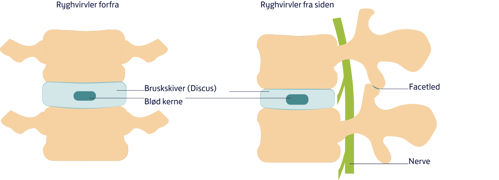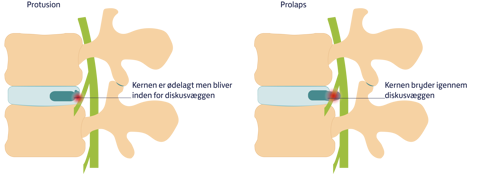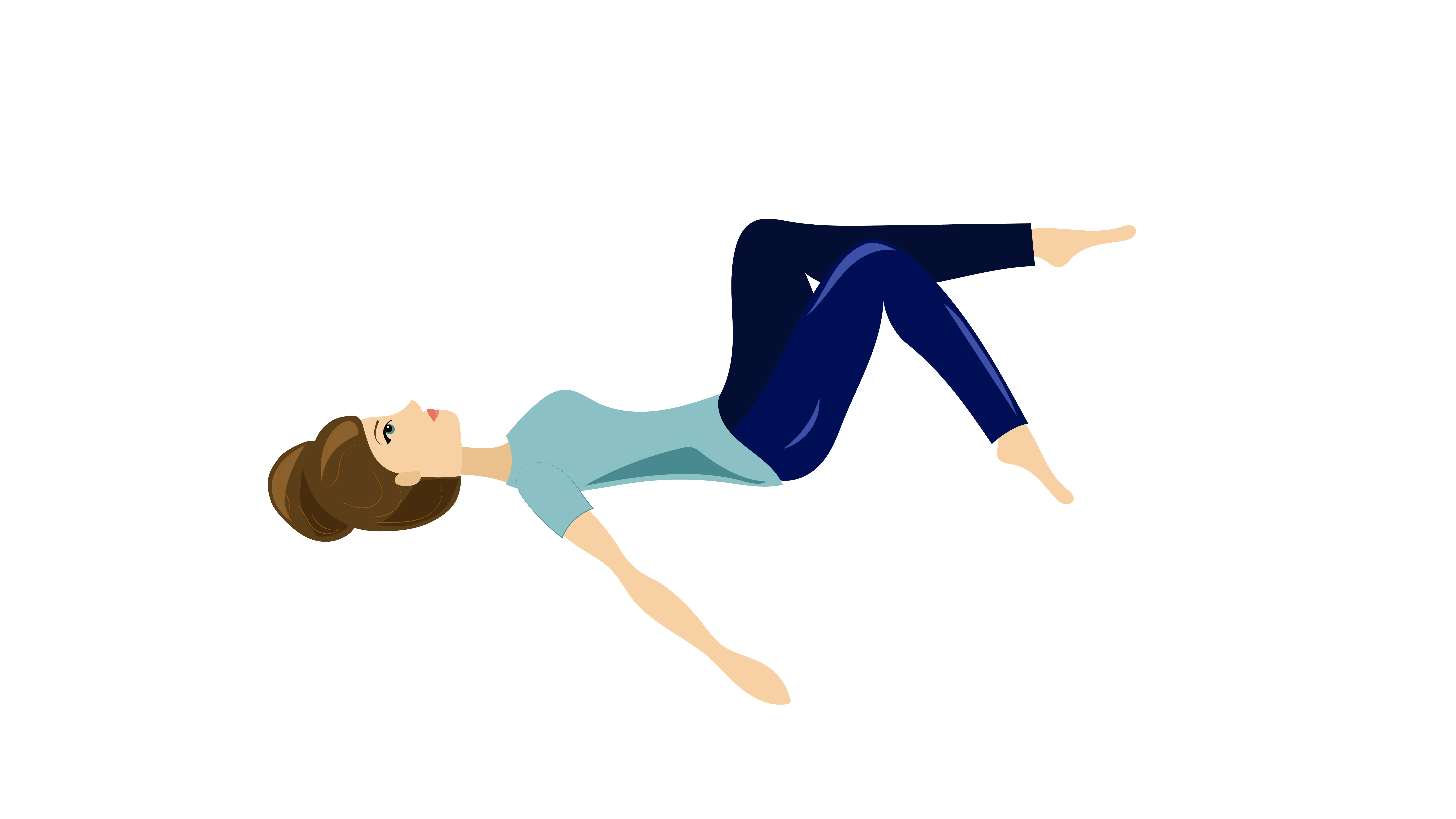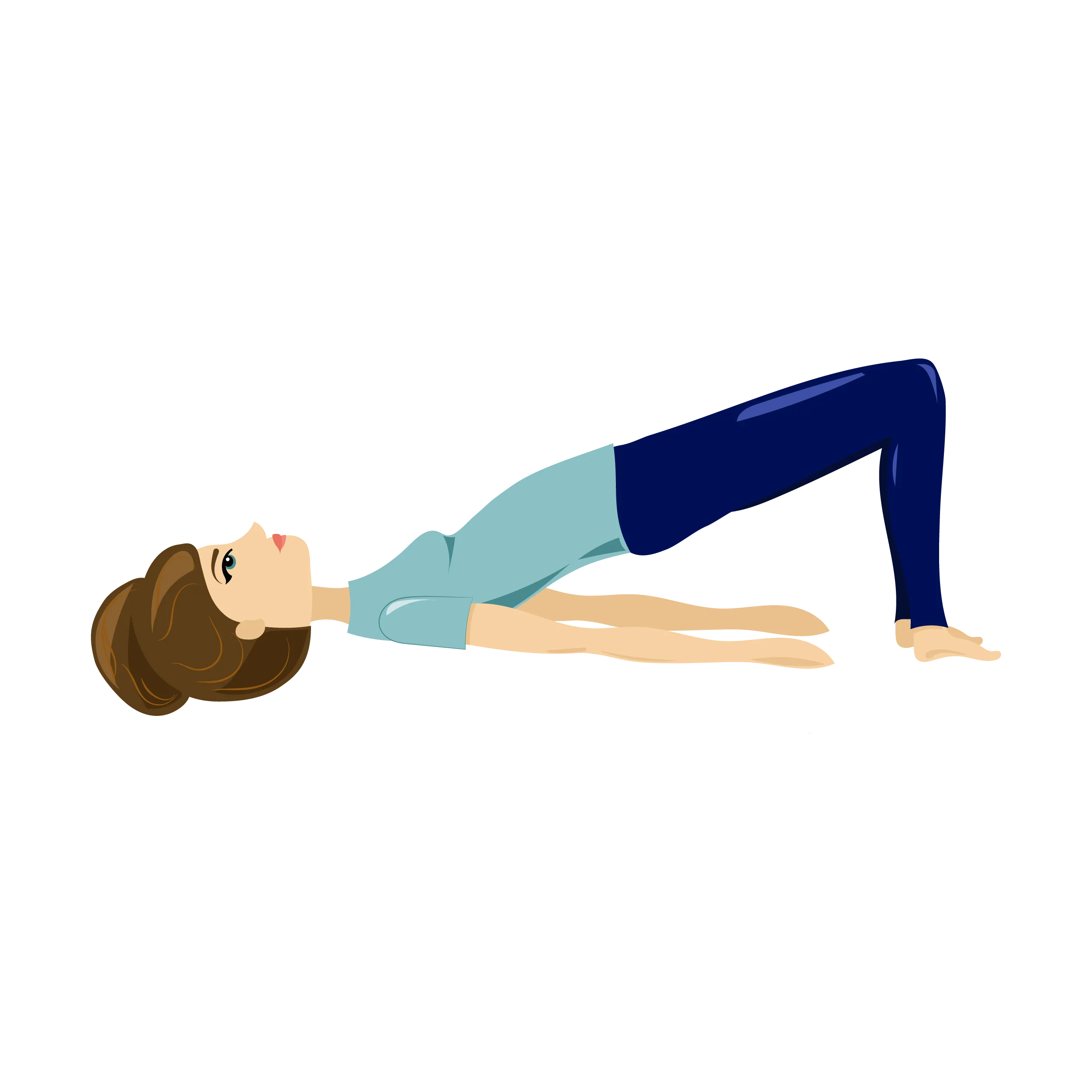Cause and symptoms
There may be several reasons why you experience back pain. In some cases, you may experience that the symptoms also radiate to the leg.
Newly developed and completely harmless lower back pain can also radiate to the leg. Here, it may be the vertebrae in the back that lock, which provides less space for the nerve to emerge. The muscles through which the nerve runs can tense up and cause pain.
In a few cases, lower back pain with radiation to the leg may be due to an impact from a disc, typically as a disc protrusion or herniated disc.
Between the vertebrae there are cartilage discs – called a disc. The discs act as shock absorbers and make it possible for us to move our back. The normal disc consists of a soft, watery jelly core, surrounded by a ring of strong connective tissue.


A herniated disc occurs when the cartilage disc (disc) between two vertebrae cracks, pushing out the soft nucleus. If the cartilage disc has not completely ruptured, but has a weak point, the soft nucleus can cause a protrusion, which is called a protrusion.
In both cases, it can affect a nerve to the leg, as the prolapse/protrusion can get in the way of the nerve's origin between the vertebrae. The radiation can be experienced as stabbing, buzzing, a feeling of numbness or as reduced strength in the leg during normal walking. You may experience that your discomfort worsens when you have to bend forward, for example when putting on shoes and socks.
A prolapse/protrusion often heals on its own. The vast majority of people become pain-free again, without injury and without surgery. After three months, the majority of people with a diagnosed prolapse experience a significant improvement.
How to help yourself
Activity is of great importance in maintaining mobility in the back and avoiding worsening of discomfort in the lower back and radiation to the leg. You can safely move and stay active, even if it causes a certain degree of pain.
You can take breaks during the day, but it is important that you maintain your activity level and your physical fitness and in this way avoid inactivity. Make sure to carry out your daily activities and vary your positions during the day.
You should adapt your activities so that you can stay physically active as much as possible. You should avoid activities that worsen your pain and instead find other activities that you can do despite the pain. These can be, for example, walking or swimming/aqua aerobics as well as light exercises.








